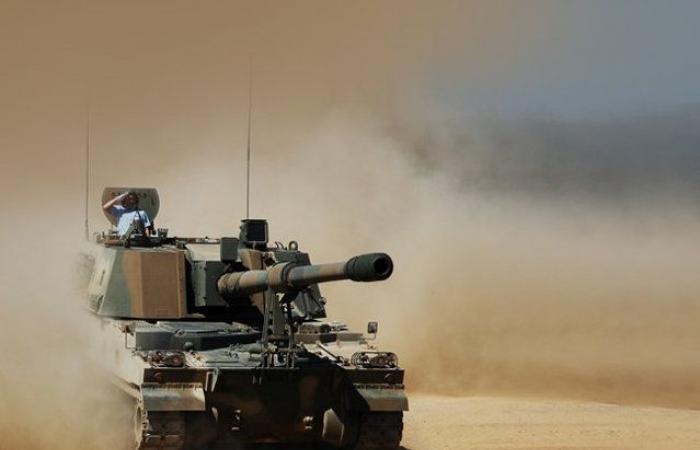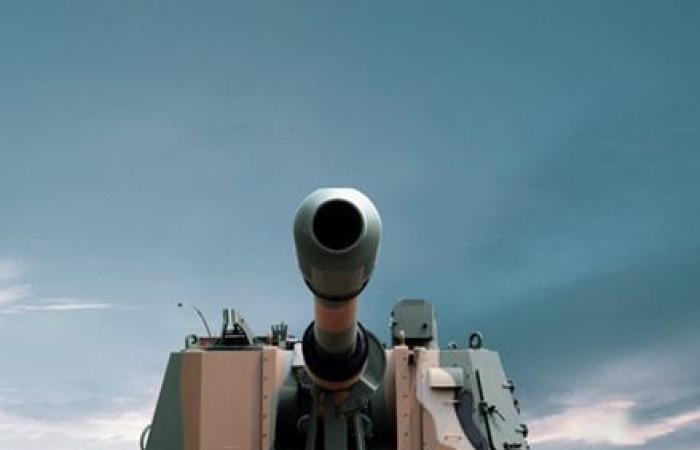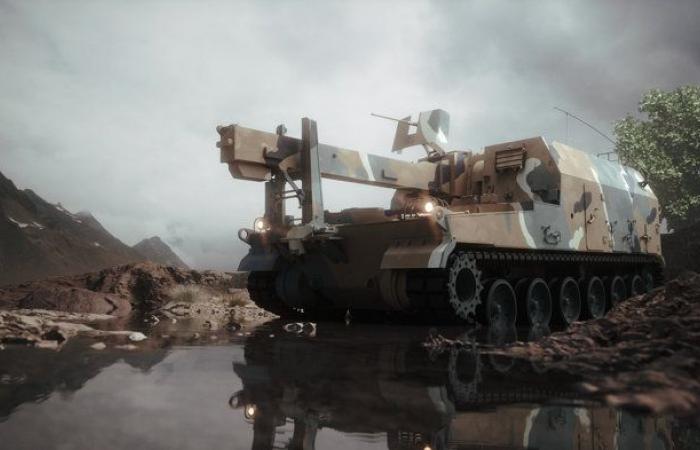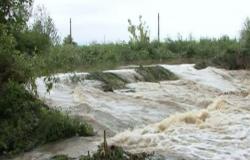In March 2023, the Ministry of Defense asked the Romanian Parliament to approve the acquisition program for weapon systems, 155 mm self-propelled howitzers, short and very short range anti-aircraft missile systems and infantry fighting vehicles. The howitzer program consists in the acquisition of five self-propelled howitzer systems of 155 mm battalion level (3 tracked system + 2 wheeled systems). The howitzers will be equipped with five battalion-type units of the Land Forces, the total value of the program being estimated at 1,923 million dollars. For this program, the purchase is made in two stages:
– the first stage, worth 1.158 million dollars, involves the acquisition of 54 155 mm howitzers (on tracks) and was initiated in 2023, taking place over a period of 6 years and considering the acquisition of 3 self-propelled systems on tracks, including ammunition, logistical support and specific training equipment;
– the second stage, worth 765 million dollars for 36 155 mm howitzers (on wheels). The acquisition of two self-propelled systems is being considered, starting after 2028.
The tender for howitzers started on July 27, 2023 and was divided into two phases:
– phase I – candidate selection, in which Hanwha Aerospace, Krauss Maffei Wegmann (with PzH 2000) and BMC Savunma Sanayi (with T-155 Firtina) participated. The only one left in the competition was the Hanwha Aerospace company.
– phase II – the technical and financial proposal, which involved negotiations regarding the South Koreans’ proposal and the Romanians’ specific requirements. The analyzes and clarifications would have ended last week.
The following were requested during the auction: Each 155 mm howitzer system of Battalion level will have the following composition:
– Howitzer horse. 155 mm self-propelled, on tracks: 18 cpl;
– Horse pipe. 155 mm, spare: 9 pcs;
– Specialized vehicle for transporting and loading ammunition: 12 cpl;
– Self-propelled artillery observation post: 9 cpl;
– Weather station: 1 cpl;
– Technical means of evacuation of damaged equipment (TEHE-VAC): 3 cpl;
– Acoustic research system: 3 cpl.
The ammunition is composed of approximately 18,000 artillery rounds. At the same time, together with the howitzer system cal. 155 mm Battalion level, the supplier has the obligation to deliver the following types of ammunition, their estimated value being included in the estimated value of the procurement procedure:
– Shot 155 mm with explosive projectile;
– 155 mm shot with smoke projectile;
– 155 mm shot with lighting projectile;
– Shot 155 mn with inert projectile (for training).
Regarding the delivery, this assumes that the first system (18 howitzers) will arrive in Romania in 30 months (2 and a half years):
1. Horse howitzer system. 155 mm Battalion level – 3 systems:
– System no. 1 – T0+30 months;
– System no. 2 – T0+40 months;
– System no. 3 – T0+60 months.
2. Shot 155 mm with explosive projectile- 17,352 pcs: T0+30 months
3. Shot 155 mm with smoke projectile – 324 pcs: T0+30 months
4. Shot 155 mm with lighting projectile- 324 pcs: T0+30 months
5. Shot 155 mm with inert projectile (for training): 720 pcs: T0+30 months
The “thunder” of the Romanian Land Forces?
Thus, Hanwha remained the only company that reached the second phase of the howitzer auction K9 THUNDERwhich, by the way, has certain elements in common with the other howitzers in the competition: it has the same engine used on the PzH 2000, more precisely a 1000 horsepower MTU MT 881 Ka500 diesel engine, and the T-155 Firtina howitzer has based on the K9 howitzer project, Turkey being, in fact, one of the client countries of the Hanwha Aerospace company.
The K9 howitzer entered the service of the South Korean army in 1999, and was later purchased or ordered by other countries. Finland ordered and received 48 howitzers, India ordered 100, of which 25 were delivered in 2018, Estonia ordered 18 howitzers, the delivery of which began in 2020 and will end in 2023. And Norway, Australia, Egypt and Poland ordered this type of howitzer from the South Koreans. In 2020 alone, 1,700 K9 howitzers were produced.
Source: Hanwha Aerospace
The K9 TUNET is compatible with NATO 155 mm ammunition and standard projectiles have a range of 30 to 40 km. It can launch three projectiles in 15 seconds, each with different trajectories so that all projectiles reach the target at the same time.
In terms of weight, the K9 TUNET self-propelled howitzer weighs 40 tons, the same as the T-155 Firtina, but lighter than the PzH 2000 howitzer, which has 57 tons, for example. It is effective on all types of terrain and has great traction in areas with soft terrain. K9 TUNET also has a hydropneumatic suspension, minimizing shock and vibrations in the cabin.
In addition to the K9 Tunet self-propelled howitzers, the contract will also include specialized machines for transporting and loading ammunition K10, which are the world’s first operational vehicles with an automatic ammunition loading system. Because they work complementary to the K9, they ensure a much faster loading of ammunition compared to other similar systems. The production of the K10 system was required by the Korean military after the full development of the K9 to increase the amount of ammunition per howitzer. Of course, it has the same chassis, the same engine and the same suspension.
Although the K10 has an automatic ammunition loading system, for emergency situations and the need to access the ammunition, the projectile storage compartment has separate access doors so that it can be loaded and used manually. It has the same level of protection as the K9, a weight of 47 tons and a maximum speed of 62 km/h. Thus, through the fast and automatic loading of the ammunition, the soldiers no longer have to get out of the vehicle and become possible targets of the enemy, nor do they waste time with its automatic loading. Norway, for example, chose the same package (K9 and K10) precisely because, in situations where the terrain is difficult and ammunition loading is difficult, the K10 makes the work of the military easier by automatic loading.
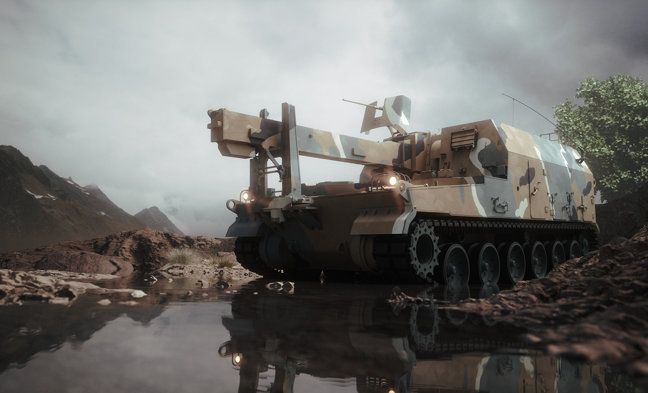
Source: K10/Hanwha Aerospace
The Hanwha Aerospace company already has five NATO member states as customers for the K9: Poland, Norway, Finland, Estonia and Turkey, and wants Romania to be the sixth NATO customer. As the company is the only one left in the competition and the technical details were finalized last week, a contract signing is expected during the BSDA defense exhibition. Moreover, Minister Tîlvăr suggested that this contract is as if signed.
“At this moment, as you well know, (the howitzer no.) is in our attention and we are in the process of analyzing the offer and we will activate the procurement procedures at the right time, so that the Romanian Army can benefit from it. (…)It depends on my colleagues, because, every time, additional information is requested, certain parameters are checked”, said the minister, who is in South Korea.
It is important to specify that the South Koreans were asked to make significant improvements to this self-propelled howitzer, the Romanian side being extremely strict with certain requirements, so that, if it were to be signed, the Romanian Army would have, as the South Koreans claim, the best variant of the howitzer, even better than that of the Poles. Moreover, the South Koreans also committed to open a maintenance and logistics center in Romania, for the K9 TUNET howitzer, suggesting a long-term cooperation with Romania. The investments will be made strictly by the South Korean side, in a completely new location, and between 100 and 200 jobs are expected to be created in Romania, in this context.
For Hanwha Aerospace, Romania represents a new market and the aim is, by opening this center, to transform the country into a regional hub, especially if the howitzer will be sold to other countries in the region. But in addition to the desire to demonstrate its commitment to the howitzer contract, the company also wants to show its involvement for a possible other contract it is targeting, more precisely the one related to the infantry fighting vehicles, for which it will enter the competition, once the auction is launched, with the vehicles Redbackwhich have common elements with the K9 howitzers, more precisely they have a similar chassis.
Interestingly, however, Minister Tîlvăr conveyed, on Tuesday, that the ministry is also interested in the South Korean K2 Black Panther tanks, produced by Hyundai, which he described as “well rated worldwide”. The statement is surprising because, last year, Romania signed a contract for the purchase of a battalion of American M1 Abrams tanks, for 1 billion euros. Until this moment, MApN has not announced any program for the acquisition of other tank battalions. The Korean K2 Black Panther tank has a 120 mm smoothbore gun and weighs 55 tons, being lighter than the Abrams, closer to the French Leclerc tanks, which are already deployed in Romania, at Cincu. The attention of European states towards South Korean defense companies is, however, a subject that raises disputes at the European level. For example, just yesterday, French President Emmanuel Macron said that European states should give up American and South Korean investments and focus more on purchases from the European defense industry.
For the most important news of the day, transmitted in real time and presented equidistantly, LIKE our Facebook page!
Follow Mediafax on Instagram to see spectacular images and stories from around the world!
The content of the www.mediafax.ro website is intended exclusively for your information and personal use. It is forbidden republication of the content of this site without the consent of MEDIAFAX. To obtain this agreement, please contact us at [email protected].
Tags: South Koreans Hanwha set sights Romania open logistics maintenance center selfpropelled howitzers plans bigger Part
-
